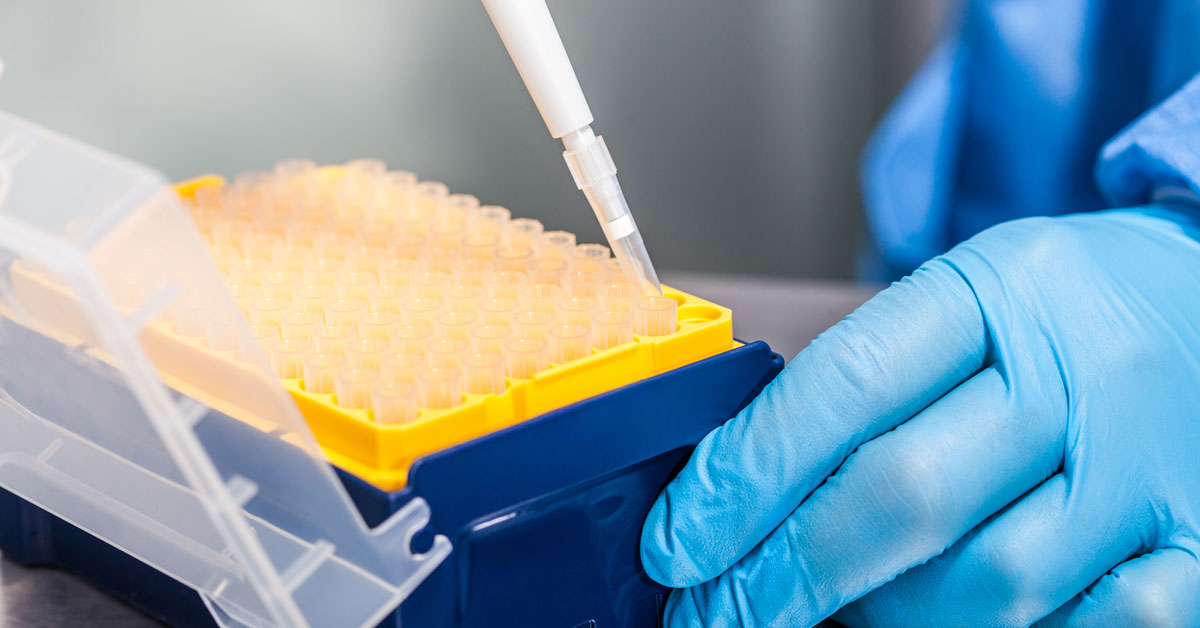Reduce, Reuse and Recycle: Solutions for Plastic Pipette Tips and Pipette Tip Racks

Pipette tips and their accompanying storage containers are undoubtedly one of the largest contributors to laboratory waste. In fact, a waste audit at MIT found that 80% of their laboratory plastic waste was from pipette tip boxes alone1. Although different labs will have different waste stream percentages depending on the type of research being done in the building, in most biology labs, items like pipette tips/boxes and disposable gloves are top contenders for the largest contributors to laboratory waste. Much like gloves, these single-use plastics are usually non-recyclable due to the risk of possible contamination that comes with utilizing these resources in various types of experiments, the type of plastic typically used, and the difficulty remanufacturing these items to match the properties of the original product. From reducing plastic packaging to lowering the percent of plastic used in the production of certain products, find out how manufacturers are implementing different methods to combat this issue:
Plastic Reduction Strategies
So how exactly have these companies committed to using less plastic? These methods include stackable pipette tip racks, refillable racks, and pipette tips sold in bags rather than new racks.
Stackable Racks: Why buy 5 individual racks when you could buy one stackable tower of racks? This product eliminates unnecessary plastic by taking racks containing pipette tips and stacking them on top of each other to create one compact unit. This removes the need for the individual plastic casings (the clear plastic top you see to the left) that typically come with one single rack. 5 stacked racks only need one cover rather than 5.
Rack Refill Systems: Take advantage of pipette refill systems to avoid accumulating pipette tip racks and boxes in your lab space. Load the tips into an existing pipette tip rack by placing a refill insert into an existing pipette tip rack and firmly press down to dispense. These refill inserts come stacked in a cardboard sleeve that unfolds and reseals for efficient storage.
These solutions can reduce the amount of plastic waste accumulating in your lab, taking up valuable space that could be used for a more productive purpose. Sure, the durability of these plastic boxes makes them great storage containers for random items that might otherwise be tossed haphazardly in a drawer, but how many of these boxes could one lab possibly reuse? For example, the lab I was working in used to store their spacers and combs for SDS-PAGE gel making in an old pipette tip box, and while great for this particular instance, could not find many more applications in which these pipette tip boxes would be useful.
Choosing Recyclable Plastics.
Most pipette tips and their boxes are made of either low density polyethylene (LDPE, plastic #4), or polypropylene (PP, plastic #5). Where most areas of the United States (including Santa Barbara) will only accept polyethylene (PET, plastic #1), polyethylene terephthalate (PETE, plastic #1), or high density polyethylene (HDPE, plastic #2) for recycling. When purchasing lab plastics, look for what type of plastic your consumables are made of and ask your sales representatives at lab supply companies if they offer Plastic #1 or Plastic #2 alternatives. If you ask for “Recyclable” alternatives, that could mean many different things to many different people seeing as, what is recyclable in one area won’t be in another area.
Please note that if your pipette tips and/or boxes are made of a recyclable material, you will still need to evaluate whether they are safe to recycle based on the chemicals and substances used in the tips and how the items were cleaned. Be sure to check with your local waste hauler (for SB locals: Marborg), your campus recycling manager, and with your campus Environmental Health and Safety office to learn about procedures on how to safely recycle these products.
Consider Choosing Items That Use Less Material.
Many laboratory supply companies offer products that are designed to use less plastic material in their construction or packaging than their competitors. This is usually done by creating thinner walls or streamlining the design in ways that attempt not to impact key performance indicators. This also has significant advantages for the company as reducing the material that goes into a product also saves the manufacturer significant money in the production phase. In researching this article, we found at least three companies making claims such that their products use 33%-50% less material than their competitors. This does raise the concern of who they are comparing to if so many of the companies are making similar claims. Claims are typically based on a comparison with the “industry standard” or with one or more unnamed companies. There is unfortunately no established industry standard though and so these claims can be difficult to verify. That is not to say that the claims are false, just challenging to verify for the consumer. Claims can also be exaggerated if the comparison is with a company that is an outlier in the other direction. If this is a trait that you want to optimize for, we recommend asking your sales rep and sales reps from different companies vying for your business for the weight of plastic per item.